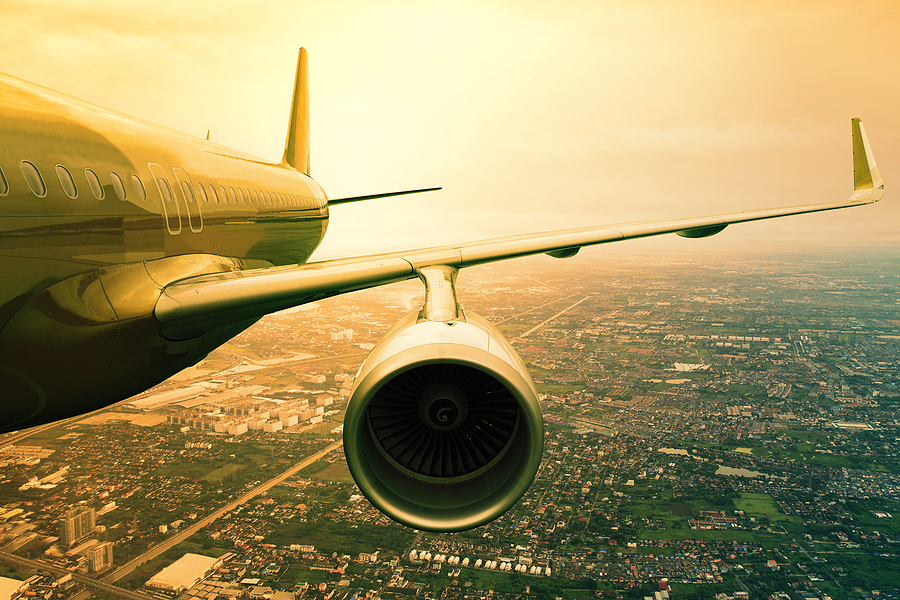Aeroplane Cabin Pressure: Can You Really Get Sucked Out?

Flying is a marvel of modern technology, and it involves a range of fascinating physics concepts that impact our experience onboard. One question that often arises is whether it's possible to get sucked out of an aeroplane due to cabin pressure changes. Understanding these concepts can be complex, but with the help of resources like Physics Tuition, you can gain a deeper insight into the science behind aeroplane cabin pressure and address the realities of such scenarios.
Understanding cabin pressure
Cabin pressure is a critical aspect of aeroplane design and operation. At cruising altitudes, typically around 35,000 feet, the outside air pressure is much lower than at ground level. To ensure passenger comfort and safety, the cabin is pressurised to mimic the atmospheric pressure at a lower altitude, usually equivalent to around 6,000 to 8,000 feet above sea level. This process is a key part of the science behind flying, which involves understanding how atmospheric conditions affect the aircraft and its occupants.
The pressurisation system involves a complex balance of air flow and pressure maintenance. Air is continuously pumped into the cabin from the engines and adjusted to maintain a stable environment. This system is designed to keep the pressure consistent even as the aircraft climbs or descends, providing a safe and comfortable atmosphere for passengers.
The role of aircraft doors and windows
The design of aircraft doors and windows is crucial in maintaining cabin pressure. Modern aeroplanes are built with reinforced doors and windows that can withstand significant pressure differences. The seals and locking mechanisms ensure that these components remain securely in place, even during sudden decompression events.
The doors are equipped with sophisticated locking systems that engage automatically when the aircraft is pressurised. This prevents them from opening while in flight. Similarly, the windows are designed to endure high-pressure variations, with multiple layers of glass and specialised seals that prevent air leakage.
What happens during a decompression event?
Decompression refers to a sudden loss of cabin pressure, which can occur due to various reasons, such as a structural failure or an accident. When decompression happens, the cabin pressure drops rapidly, and the air inside the cabin tries to equalise with the lower external pressure.
However, despite the dramatic nature of decompression, the risk of being sucked out of the aircraft is extremely low. This is because of several safety features designed to prevent such incidents. The rapid depressurisation will cause the air inside the cabin to escape quickly, but the force required to expel a person is far beyond the pressure differential experienced.
The myth of getting sucked out
The idea of being sucked out of an aircraft during a sudden decompression is a popular myth, often fueled by dramatic portrayals in movies. While it's true that decompression can be alarming and dangerous, the likelihood of being ejected from the plane is highly improbable.
The cabin is not only pressurised to prevent such occurrences but also designed to contain any potential threats to safety. The force exerted by the rapidly escaping air during decompression is not enough to overcome the structural integrity of the cabin or its components. Moreover, the cabin pressure system is built with multiple redundancies to handle extreme situations and maintain a safe environment for passengers.
Safety measures and protocols
Aeroplanes are equipped with several safety measures to handle decompression scenarios. Oxygen masks, for instance, are provided to passengers to ensure they can breathe if the cabin pressure drops significantly. The masks are connected to a supplemental oxygen system that activates automatically in case of a loss of cabin pressure.
Additionally, flight crew members are trained to handle decompression emergencies. They follow strict protocols to manage the situation, including guiding passengers through the use of oxygen masks and performing emergency procedures to stabilise the aircraft. The priority during such events is to ensure the safety and well-being of everyone on board.
The physics behind air pressure and safety
The principles of physics play a crucial role in understanding aeroplane cabin pressure and safety. According to Boyle's Law, the volume of a gas is inversely proportional to its pressure when temperature is constant. This means that as the pressure outside the cabin decreases, the volume of air inside the cabin remains relatively stable due to the pressurisation system.
Furthermore, the concept of atmospheric pressure helps explain why the risk of being sucked out is minimal. The difference in pressure between the inside and outside of the aircraft creates a force that pushes against the cabin walls, but this force is insufficient to overcome the structural integrity of the aircraft or to dislodge passengers.
Conclusion
The physics of aeroplane cabin pressure is a testament to the advancements in aerospace engineering and safety. The design and technology behind cabin pressurisation ensure that passengers remain secure even during decompression events. The myth of being sucked out of an aircraft due to cabin pressure changes is just that—a myth.
For those interested in exploring more about the physics behind such phenomena or seeking to understand these principles in greater detail, Physics Tuition offers comprehensive support and insights. By studying these concepts, you can gain a deeper appreciation for the science that keeps us safe while flying. For more information on how Physics Tuition can help you explore the fascinating world of physics, visit Physics Tuition.